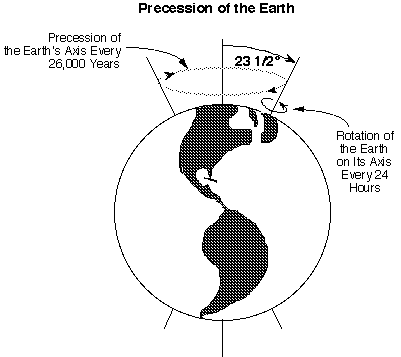
Like a spinning top with a slow wobble, Earth’s axis slowly wobbles, or precesses, relative to its orbital plane. The moon's gravity, primarily, and to a lesser degree the sun's gravity, acting on Earth's oblateness tries to move Earth's axis perpendicular to the plane of Earth's orbit. However, due to gyroscopic action, Earth's poles do not “right themselves” to a position perpendicular to the orbital plane. Instead, they precess at 90 degrees to the force applied. This precession causes the axis of Earth to describe a circle having a 23.5 degree radius relative to a fixed point in space over about 26,000 years.
